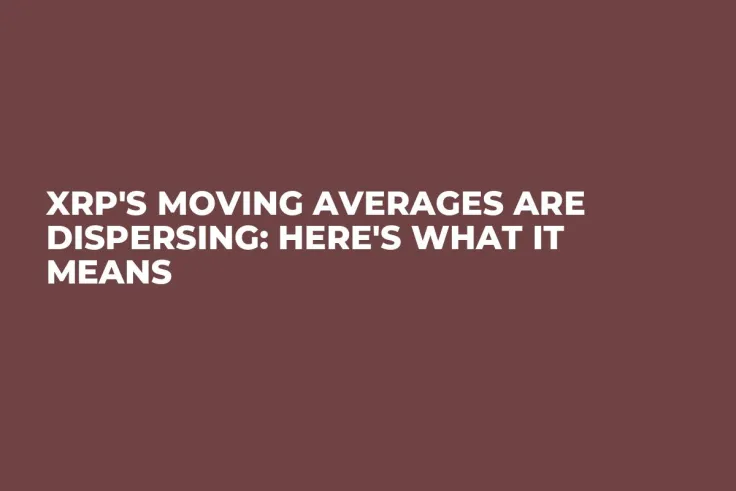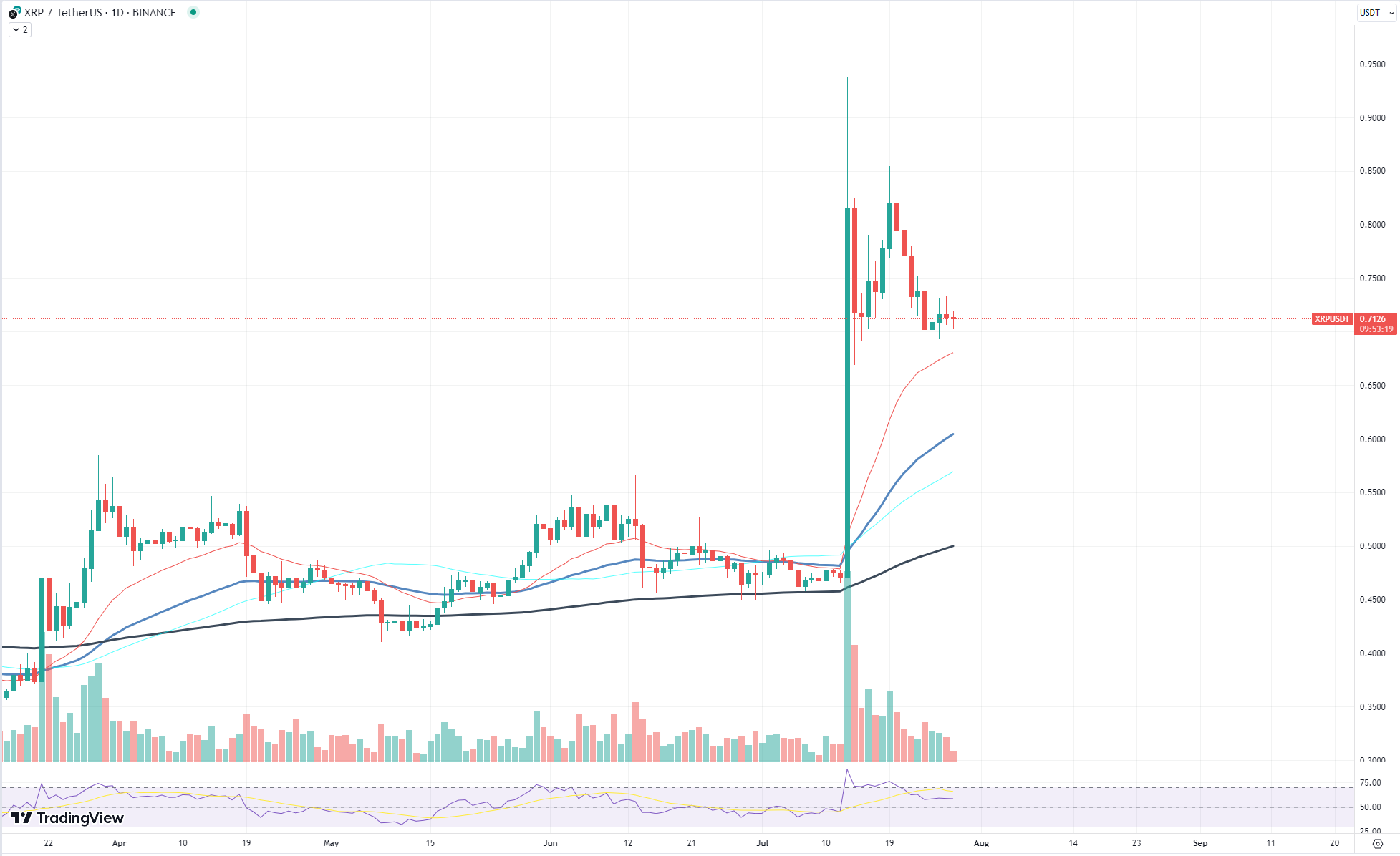
Disclaimer: The opinions expressed by our writers are their own and do not represent the views of U.Today. The financial and market information provided on U.Today is intended for informational purposes only. U.Today is not liable for any financial losses incurred while trading cryptocurrencies. Conduct your own research by contacting financial experts before making any investment decisions. We believe that all content is accurate as of the date of publication, but certain offers mentioned may no longer be available.
There is an interesting development underway for Ripple's XRP. The cryptocurrency's moving averages (MAs) are showing signs of dispersion, a development that often holds critical implications for price trends. The key MAs in focus here are the 21, 50, 100 and 200-day moving averages.
In technical analysis, the moving average, a lagging indicator, gives a smoother line to daily price changes, reducing "noise" from random price fluctuations. If these MAs disperse, or move apart from each other, it implies a change in the market's volatility or trend.

Currently, XRP's MAs are diverging from one another, which suggests that the token is entering a phase of lower volatility. This dispersion comes on the heels of a sharp decrease in value, with XRP shedding 14% from its recent peak.
This downward movement and subsequent flatlining of the trend follow a noteworthy surge in XRP's value, which was triggered by Ripple's win in court against the U.S. Securities and Exchange Commission (SEC). The positive legal outcome prompted a substantial increase in XRP's price as investor confidence rebounded. However, the post-triumph euphoria seems to have tempered as XRP has gradually given back some of its gains.
With the dispersion of the moving averages, XRP appears to be returning to a state of pre-pump equilibrium. Notably, lower volatility often precedes a significant price movement, as periods of consolidation or reduced price fluctuations usually end with a breakout or breakdown.
Cardano's volatility implosion
Cardano (ADA) has been painting an intriguing picture on the cryptocurrency market. Currently trading at around $0.3, ADA has shown no distinct signs of an upcoming reversal or drop. However, a deeper analysis reveals a fascinating interplay of trading volume and market volatility that could potentially signal a rally in the making.
Recently, Cardano has experienced a drastic drop in both market volatility and trading volume. Generally, this might be interpreted as a market cool-off or consolidation phase, a common occurrence in the dynamic world of cryptocurrencies. However, the simultaneous dip in both of these metrics may also be setting the stage for a significant price movement.
Historically, periods of decreased volatility and trading volume have often preceded a volatility spike. This is attributed to the accumulation phase, where traders and investors buy and hold the asset, thereby reducing its available supply. The reduced supply, coupled with a potential surge in trading volume, can then lead to a sudden and significant shift in price.
For Cardano, this implies that the current state of low volatility and volume could be the calm before the storm. Once trading volume starts to increase, it may catalyze a spike in volatility, thereby influencing ADA's price trajectory.
Ethereum clearly struggles
Ethereum (ETH), one of the leading altcoins and the bedrock of the decentralized finance sector, is currently facing a notable challenge. It has repeatedly attempted, and failed, to push through the 50 EMA (Exponential Moving Average) resistance level, which currently hovers around the $1,860 mark.
In market technical analysis, the 50-day EMA is considered a crucial indicator of an asset's medium-term momentum. Ethereum's inability to break above this line suggests a lack of bullish momentum, which may be reflective of a broader trend on the cryptocurrency market.
Recently, the cryptocurrency market has appeared rather anemic, devoid of the vigor it typically exudes. There has been a conspicuous lack of market-moving news or events, leading to an environment of uncertainty and apprehension. This inertia has inevitably bled into the performance of major coins, including Ethereum.
A combination of this uncertainty and the relative inactivity on the market has likely put a damper on the enthusiasm of traders and investors. Without sufficient catalysts to spur positive momentum, Ethereum's struggle to break above its 50 EMA resistance is understandable.

 Arman Shirinyan
Arman Shirinyan Alex Dovbnya
Alex Dovbnya Caroline Amosun
Caroline Amosun Dan Burgin
Dan Burgin